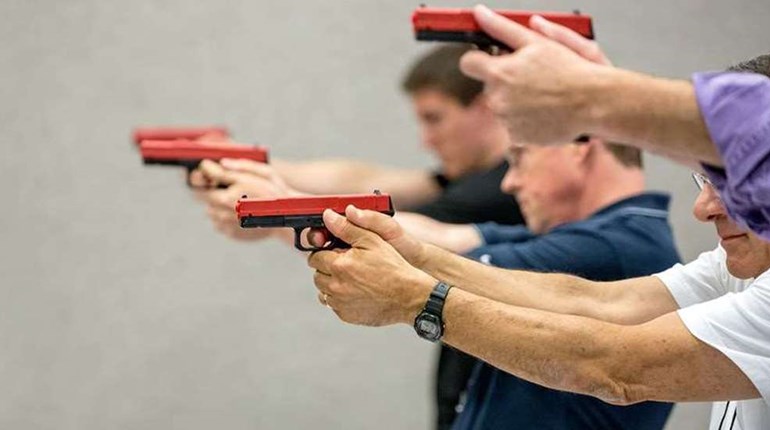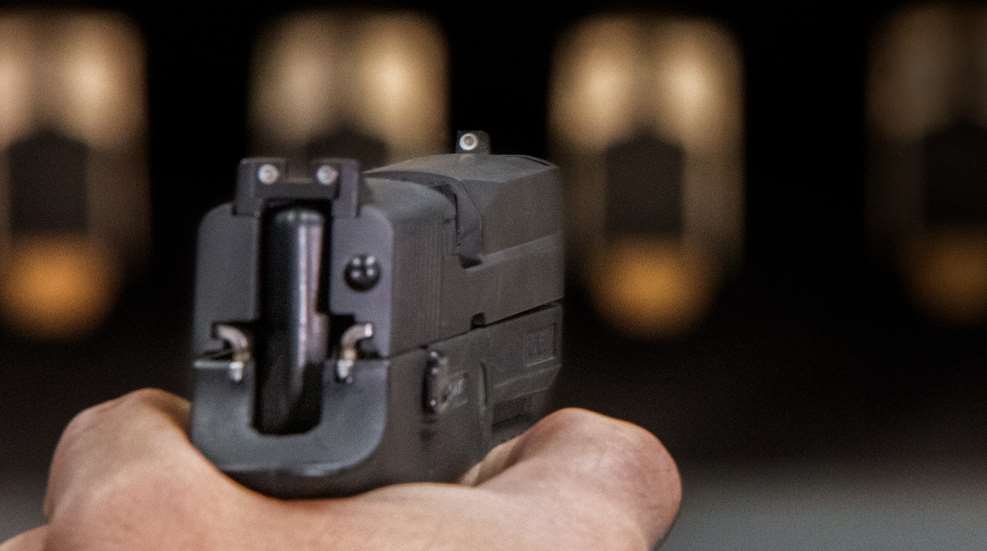
While the vast majority of defensive gun uses occur at close range, practicing at distance is an important skill for all shooters to develop. This strikes at the heartstrings for many, because as humans we typically do things to avoid pain or discomfort. Shooting at distance can be painful on our egos. It can shatter our perception of actual skill. This is even more reason to take up practicing at moderate distances. I say moderate because we don’t need to go too far down the rabbit hole.
Realistically, it is hard to justify taking a defensive shot at the extreme effective ranges of your firearms, but it is possible that you might have to defend yourself or a loved one at a range where the question becomes: “Can I make the shot?” There are some great benefits to practicing at distance that are often overlooked. It puts your skill on center stage, whether good or bad. It builds confidence in your shooting ability when you know what you can achieve. And, it reminds us of what we are capable with hard work.
Of course, in today’s climate we must be smart about how we train. We cannot be wasteful or neglect other essential skills for the sake of checking a box. However, even as a new shooter, the benefits of practicing at distance can be very illuminating. A smart plan would be to allocate a percentage of your practice ammunition to shooting at distance. How much is a question I often get asked in classes. I share with my students what my own training looks like, which is about 10 to 20 percent at distance. So, if I’m going to fire a box of practice ammunition (50 rounds), I’m looking to fire five to 10 rounds at distance. The other consideration is at what distance do I want to practice? Generally, it is not a good idea to send the target as far as it will go. Instead, I suggest starting at the next farthest yard line at which you generally stop your normal practice. So, if you don’t typically practice outside the 7-yard line, then maybe the 10-yard line would be a good place to start.

The next topic to discuss is when should I practice distance shooting: the beginning, middle or end of my range trip? A lot depends on your current skill level and goals. The benefits to starting at the beginning of your session are twofold: You are fresh and the inevitable failures will be less discouraging. When we find time to hit the range, it is nice that the more challenging skills are practiced first. I have the highest level of concentration and best chance of success. I have found when I practice what I’m better at during the end of my practice session, it helps me finish on a more positive note and minimizes putting off the harder stuff. What I practice at the start generally means I’m putting more of an emphasis on that skill. I might even go so far as to increase the rounds allocated because I want to practice more at distance.
When I place distance shooting in the middle of my practice, it is usually tied to other skills I’m developing. I might be working on transitioning from a close target, then extend the range. This forces me to shoot fast at close range, but then take the necessary time for the distance shot. I love this type of training. It makes me think quickly on my feet in order to make the shot at distance.
When I wait until the end, it sometimes lets me relax a little. I start with the other, more challenging work, then I try to relax and enjoy the last of my practice. While I know shooting at distance challenges my skill, when I wait until the end I tend to relax more because I know I’m almost done. I can take my time knowing this is my very last skill to practice.
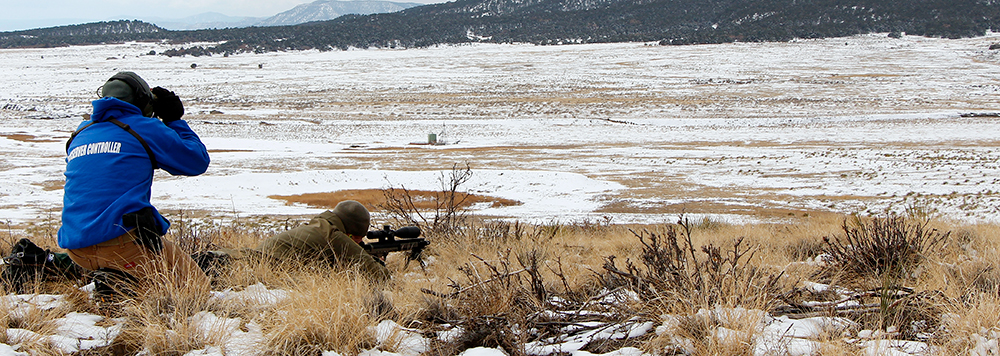
Whichever time period you choose, don’t misunderstand what I’m saying to mean you don’t have to work hard or concentrate. These are merely some of my own observations I have seen validated when we teach our classes and in my own practice.
Practicing at distance is something you can do with just about any firearm, whether a pistol, rifle or even a shotgun. Subcompact pistols, for example, are typically challenging to shoot at distance and require work and dedication to improve. Since subcompact pistols are becoming so popular and are likely the handgun many people will carry on a daily basis, it makes a lot of sense to practice with them. At the recent SIG Sauer P365 EDC Championship, there was a stage with shots at 40 and 60 yards. Granted, those are extreme for such tiny handguns, but it was challenging and rewarding to make those shots with that type of pistol.
When I’m practicing with a rifle at distance, it helps me to understand the bullet’s external ballistics, which is a whole other subject. I find this type of practice to be one of the most satisfying activities to me. There is simply something about hitting a target at rifle distance that many shooters truly enjoy, myself included.
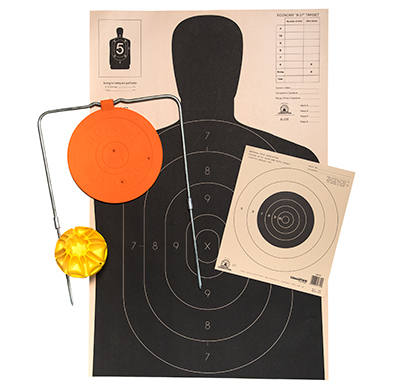
While we typically don’t think about distance with a shotgun, if we ever plan to shoot slugs, it provides us with new opportunities. Slug transitions allow the shooter to recognize the required shot is outside the effective range of the pellet-load performance envelope, even for buckshot. A quick loading of a slug allows the shooter a better chance at hitting the farther target.
The platform you use at distance doesn’t much matter; what matters if you gain a newfound appreciation for what you can accomplish, as well as the capabilities of your equipment.
A good way to look at this new adventure is to acknowledge that “this is a skill I’m learning.” It helps set your expectations and avoid some common pitfalls. One of the best reasons to practice at distance is how it has a nasty way of allowing your shooting errors to come to the surface. Too many times we practice at the typical ranges that don’t often paint a precise picture of our abilities. Due to proximity to the target, our true skill—or shooting errors—are hidden from view. The errors are there, but because the target is big and close, we don’t get a real appreciation of our real skill level. A common observation by many is they shoot well at close range, but struggle at distance. It is not quite that simple. Your shooting skill is maybe not as good as you think, but you are not aware of this because you haven’t been challenged at distance. At commonly practiced self-defense distances (3 to 7 yards), it can be hard to see shooting errors. Unless you are using very small targets, some shooting errors can go largely unnoticed. But it is not all doom and gloom: Practicing at distances where we incrementally push out farther an helps us improve at all ranges.
As we push out farther and farther, we build confidence in our abilities. This confidence is not relegated to practicing at distance. What you gain gives you more incentive to tackle new challenges and provides you reassurance in your abilities. When I see a student demonstrate their skill to be accurate at greater distances, I can see the same confidence at all the other distances at which they may practice.
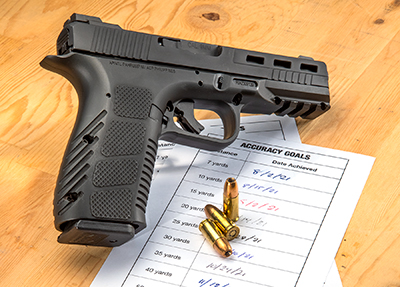
Another misconception is the skill transfer (or, conversely, the belief that there is no skill transfer) for the common defensive-gun-use distances. One of my mentors, the late Louis Awerbuck, would tell me that just because the conditions (such as distance) are different, it is all proportionate. I used to think shooting at distance, which was more accuracy-based, would somehow negatively affect my ability to be fast up close. It only affects you if you are not focused on the outcome—when you fail to understand the relationship between time, distance and exposure. But, if I understand these conditions are in a constant state of flux and adjust accordingly, then there is no hindrance.
Practicing at distance is not easy. It is hard work, which is one of the many reasons I enjoy the activity. After all, there is nothing wrong with a little hard work. It is good to experience failures from time to time. I know it is frustrating, but the lessons they teach us are important. I promise you, though, if you put in the hard work to improve in an area that is challenging, you will be quite happy with the results. Yes, there will of course be the improvement in my ability to hit at greater distances. What I’m talking about, however, is the feeling of accomplishment when you set out to tackle a problem, one filled with challenges you must overcome, show the tenacity to keep trying and the discipline to accomplish a goal. When I think back to how poorly I shot at distance years ago, it makes me smile, because while I was terrible at the start, I’m pretty good at it now. The hard work paid off.













